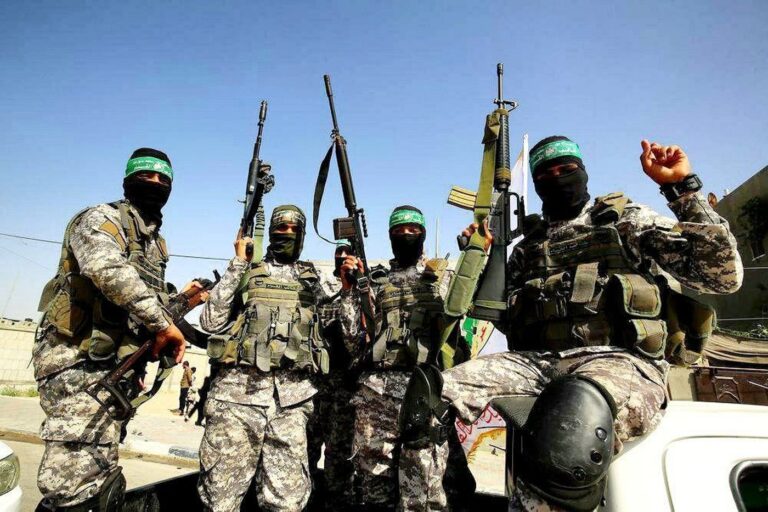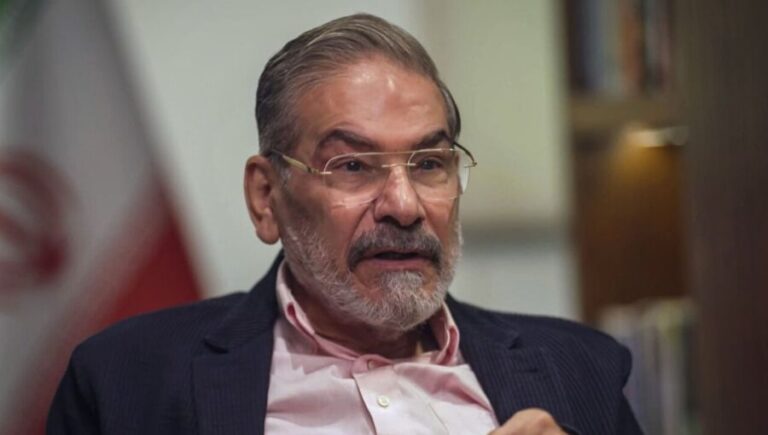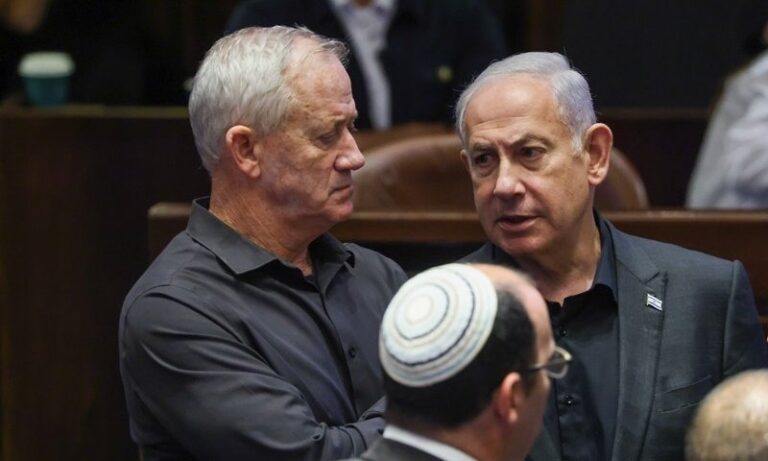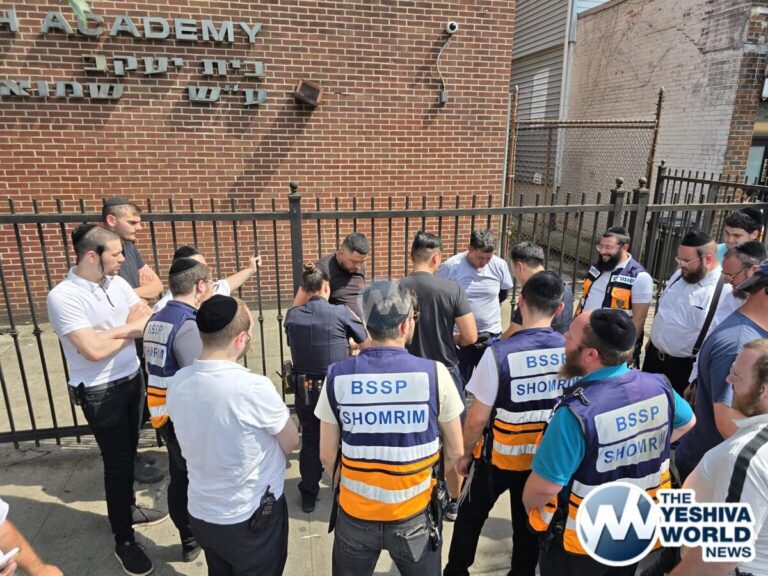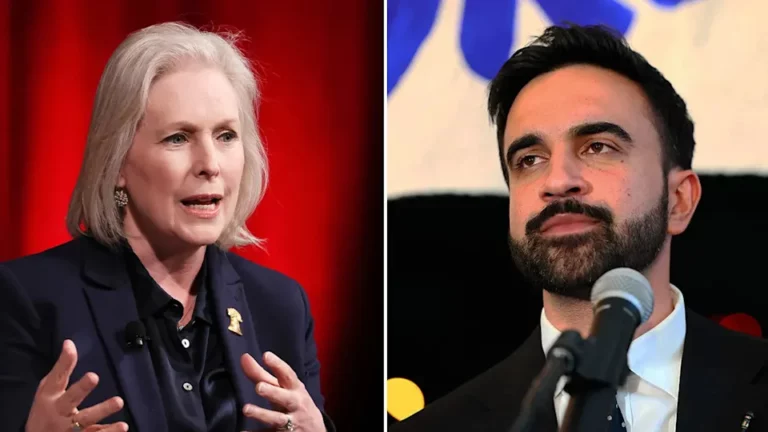 [PHOTOS BY LIPA STAUBER & YITZY ENGEL IN EXTENDED ARTICLE]
[PHOTOS BY LIPA STAUBER & YITZY ENGEL IN EXTENDED ARTICLE]
Gary Stein spent the better part of the past week learning about Chabad—in depth and in person. He left Vacaville, Calif., last week at the invitation of Rabbi Chaim Zaklos, co-director of Chabad-Lubavitch of Solano County, and the two made their way to New York City, joining a group of 5,200 Chabad rabbis and guests from 86 countries converging for the annual International Conference of Chabad-Lubavitch Emissaries (Kinus Hashluchim).
The conference, now in its 32nd year, offered a chance for the rabbis to recharge their batteries in an atmosphere of camaraderie and inspiration before returning to their communities. It also gave community members the opportunity to better appreciate the global impact of Chabad-Lubavitch and its underlying philosophy, and spend some quality time with fellow Jews from around the world.
Which is exactly what Stein, who participates in Shabbat dinners and attends guest lectures at his area Chabad center, was looking for: “I wanted to get more of an idea of the worldwide spirit of Chabad. It’s hard to get that from someone just telling you about it.”
They arrived on Wednesday for five jam-packed days, which included extensive Torah classes, prayer with thousands, a wide range of workshops and talks, and, of course, a visit to the Ohel, the resting place of the Lubavitcher Rebbe—Rabbi Menachem M. Schneerson, of righteous memory—and his father-in-law, the Previous Rebbe—Rabbi Yosef Yitzchak Schneersohn, of righteous memory.
 “The highlight for me was being at the resting place of the Rebbe,” said Stein, who was also moved by experiencing the “dedication of those gathered there. I’ve never seen anything like it.”
“The highlight for me was being at the resting place of the Rebbe,” said Stein, who was also moved by experiencing the “dedication of those gathered there. I’ve never seen anything like it.”
Rabbi Sholom Dubov, co-director of Chabad of Greater Orlando in Maitland, Fla., became an emissary three days before the second-ever Kinus in 1984. He has made it almost every year since then, he said, noting that “just watching it grow over the years is incredible.”
He also noted that this being a Hakhel year—a year focused on unity gatherings in rededication to Torah and mitzvot—made it especially important for the emissaries to come together.

The biblical Hakhel took place once every seven years at the conclusion of the Sabbatical (Shemittah) year, and brought Jewish men, women and children to the Temple in Jerusalem to be inspired by the Torah, which was read by the king. During Hakhel years past, the Rebbe would regularly urge Jews worldwide to assemble and inspire one another to increase in Torah observance and study.
Dubov stressed that the Rebbe’s Hakhel message is both universal and personal: to unite everyone together to focus collectively on ever more Torah and mitzvot, as well as encourage each individual to “bring together” his and her own mind and heart—to sync and unite their own actions with their intentions, with the unifying intent of serving G-d.
“I think the Kinus itself is a kind of Hakhel,” he said, speaking about how the conference and its many activities cause the emissaries to congregate. “For one weekend, we all come together and focus on the common denominator.”
Hakhel was on the minds of many other participants as well.
“With all of us here together as one,” said Rabbi Yossef Benzecry, director of Congregacao Tsemac Tsedec in São Palo, Brazil, “we are responsible to connect and rededicate ourselves not only to the words and direct requirements of the Torah, but to the Torah’s ways and to its very essence.
“This appreciation of the treasures G-d gives us in the Torah is expressed in particular brilliance and depth, along with awe-inspiring, direct life relevance in the Rebbe’s teachings,” he continued. “Hence, the Kinus gathering of rededication becomes even more important than ever.”

This unity and rededication was perhaps best exhibited at the Sunday-night gala dinner in the South Brooklyn Marine Terminal. The room swelled with people gathered to rejoice in community and the work of Chabad.
Powerful presentations on Hakhel were given by a Chabad Hebrew-school student, a CTeen participant, an active student leader in Chabad on Campus, a middle-aged professional who first met the Rebbe as a young man and is now a member of his local Chabad community, and a Holocaust survivor. They all mentioned increasing their observance as a result of interaction with Chabad-Lubavitch emissaries.
Music in honor of the Hakhel year was sung by American Chassidic singer Benny Friedman.
‘A Blessing for All of You’
 Greetings came from Rabbi Yehuda Krinsky, chairman of Merkos L’Inyonei Chinuch, the educational arm of the Chabad-Lubavitch movement.
Greetings came from Rabbi Yehuda Krinsky, chairman of Merkos L’Inyonei Chinuch, the educational arm of the Chabad-Lubavitch movement.
“Any gathering of shluchim is a blessing for all of you, and ultimately, for the world at large,” he began. “In this current special year of Hakhel, who can count the blessings that each of you will garner for yourselves and for Klal Yisrael?
“I’ve had the occasion to tell you in the past that during the Kinusim for the shluchim and the shluchos, the Rebbe’s mood was perceptively festive and uplifted,” he stated. “This is truly the case as we assemble here today. No doubt, the Rebbe and the Rebbetzin are very proud and grateful to you for all that you do.”
Rabbi Moshe Kotlarsky, vice chairman of Merkos and the evening’s master of ceremonies, talked about the personal inspiration he received by observing the work of Chabad of Nepal firsthand after the April 25 massive earthquake that devastated the South Asian nation. He spoke of how Chabad emissaries Rabbi Chezky and Chani Lifshitz sprang into action—flying out to find stranded individuals by helicopter, caring for tourists in the Chabad House, and offering food and water—and later, sturdy tent shelters and even more stable house frames by partnering with the Israeli company Best Trail—to the Nepali people, many of whom had lost everything.
“We are here to fulfill our mission in its entirety—that no Jew will be left behind. No Jewish child will be deprived of a Jewish education, and when I say Jewish child, I mean from the cradle—from the minute he is born until he reaches 120. No Jew will be deprived of the chance to be brought closer to G-d by learning Torah and doing mitzvahs.
“So may the Almighty grant all the shluchim, that we go back from this Kinus strengthened, especially from the Torah studying we did as expressed in the Rebbe’s [teachings] … to achieve overwhelming success in everything we do.”
He then introduced the nearly 9-year-old Moshe Holtzberg—the surviving child of Rabbi Gavriel and Rivka Holtzberg, who were murdered in a November 2008 terror attack on their Chabad House in Mumbai, India—to lead the assembled in reciting a chapter of Psalms.
Moshe walked up to the stage assuredly and in a voice ringing with confidence read to a captive audience with nary a dry eye in the room. His crisp words hung in the air and were followed by thunderous applause.
And it wasn’t only the 5,200-plus people in the room who were inspired. Tens of thousands more joined the celebration through Chabad.org’s international webcast that for the first time this year included simultaneous translation for the deaf in American Sign Language.
‘Strength Within Ourselves’
Young Moshe was followed by the Rishon Lezion, Rabbi Shlomo Moshe Amar, former chief rabbi of Israel and current chief rabbi of Jerusalem. “When looking for a paradigm of total dedication, one need look no further than to Rabbi Shlomo Matusof, the Rebbe’s shaliach to Morocco,” said the rabbi, who had studied in the Chabad yeshivah in Casablanca.
The keynote speaker was Rabbi Shloime Chein, co-director of the Rohr Chabad Student Center in Santa Cruz., Calif., who spoke movingly about how the work of a Chabad emissary couple is more than something they do for a living, but who they are.
“The Rebbe’s standards are astonishing, both in the boundless energy and the utilization of every moment,” he stated. “And this is a bracha the Rebbe gives us. By setting the standards so high, the Rebbe in effect empowers us to reach our own unfathomable heights. The more we live and breathe our shlichus, the more strength we discover within ourselves, allowing us to inspire Jews in ways that no one thought possible. This is the work ethic—the very identity—the Rebbe imbued within the shaliach.
He credits much of his inspiration—both as a boy and an aspiring shaliach—to the Rebbe, and as such told some powerful childhood anecdotes that have remained with him.

Chein urged his fellow shluchim to redouble their efforts to spread Jewish awareness, joy and Torah knowledge despite any difficulties they may encounter.
“And together with the shaliach is the lay leader,” he continued, glancing around the room at the many guests present. “The Rebbe insisted on calling you partners, rather than donors. A donor contributes to a cause outside of himself. A partner has a vested interest in the cause; it concerns him personally.
“I believe I echo the sentiments of every shliach and shlucha when I say, we feel blessed by this partnership. For your crucial support, we are eternally grateful. And of your abilities, we are in awe. You are able to influence frontiers beyond our reach. There are Jews, who for whatever reason, won’t come to the rabbi’s home for a Shabbat dinner or Hakhel gathering, but they feel honored to be invited to your Shabbat table or your Hakhel social. There are people who won’t yet come to a Chabad center for a class, but they are delighted to attend a lunch-and-learn in your office.
“There are Jews for whom what the rabbi does might seem old-fashioned, but when you do it, it seems hip. With your talents, ambitions and accomplishments, you possess keys to doors that are still closed before us. You bring Abraham’s mission and the Rebbe’s calling to places only you can.
“And in truth,” he emphasized, “this must become the modus operandi of each Jew. All around us, all the time, are opportunities to turn a serendipitous moment into a shared mitzvah. We must seize these opportunities.”
In his talk, the rabbi drew from deep personal experiences of persistence in the face of adversity, which also was the topic of a video of how the Rebbe inspired and guided different shluchim who faced various challenges over the years. All of them wound up succeeding in their missions.
In Chein’s case, his challenge was in fighting a rare autoimmune disease that he eventually overcame.
‘Incorporating Judaism Into Young Lives’
 Rabbi Chaim Goldstein and his brother Rabbi Alter Goldstein, Chabad on Campus rabbis at Drexel University in Philadelphia and at the University of Michigan in Ann Arbor, respectively—emphasized the importance of college-focused Chabad efforts around the world. “There is a need out there, especially on campus,” emphasized Rabbi Chaim Goldstein. “It’s such an important time in young people’s lives, and we really need to be there to help them out, to guide them.”
Rabbi Chaim Goldstein and his brother Rabbi Alter Goldstein, Chabad on Campus rabbis at Drexel University in Philadelphia and at the University of Michigan in Ann Arbor, respectively—emphasized the importance of college-focused Chabad efforts around the world. “There is a need out there, especially on campus,” emphasized Rabbi Chaim Goldstein. “It’s such an important time in young people’s lives, and we really need to be there to help them out, to guide them.”
Rabbi Alter Goldstein pointed out college is a time when students make decisions that affect the rest of their lives, and they often need support, advice and guidance in doing so. “This is a significant period when you can inspire students to pursue their interest in incorporating Judaism within their lives,” he said.
Rabbi Yossi Freedman, co-director of Chabad of Downtown Cleveland in Ohio, attended the Kinus for his sixth year. In addition to the workshops and the camaraderie, he said, being with so many others in the same situation gives him renewed energy to continue his work. He has also benefited from the opportunity to share tips and exchange notes on the sidelines of the events.
When he goes back to his community—primarily comprised of young professionals who have moved into the city—he plans not only to reflect on the weekend, but to challenge his community. “I’m going to share a lot of my feelings about the experience, and push them to not only engage in additional mitzvahs and be part of this, but to go out and teach other Jewish people to do a mitzvah and increase their Jewish awareness as well.”
Meanwhile, Gary Stein said he appreciated the chance to spend time in Crown Heights, and felt that he will return to California with a far better understanding and appreciation of the Rebbe and his teachings.
“I knew the Rebbe was very meaningful to Rabbi Zaklos,” he said. “So I thought I should get to know more about him. Now I’m much more impressed with the depth of his influence on the Chabad community and the Jewish world.”

























































































































































































